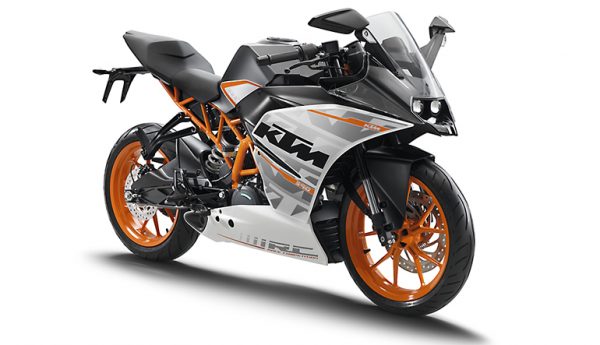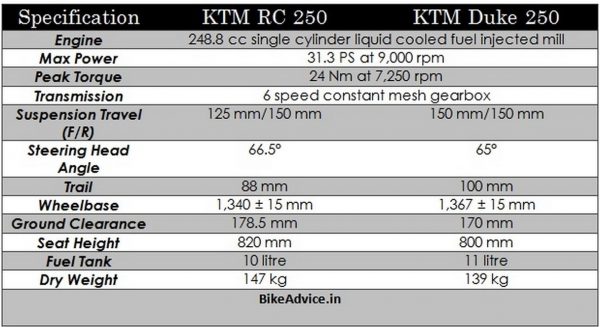KTM surprised everyone with the unveiling of their quarter liters RC250 and Duke 250 at the Tokyo Motor Show on 28th March. Both these motorcycles sit right in between the 200s and 390 twins. In comparison with the 25hp of power of the 200s and 44hp power of the 390s, these 250s produce 31hp of power which is just what the doctor ordered!!!
The 250cc motor is a downsized version of the 373cc engine found on the Duke 390 and RC 390. Displacing 248.8cc, the liquid cooled fuel injected mill produces 31.3 PS of peak power at 9,000 rpm and 24 Nm of peak torque at 7,250 rpm. The fuel injection, engine management and ignition system is by Bosch, the same brand which also supplies for the 200s and 390s.
Duke 250 & RC250 Key Features
Here is a list of interesting bits and key features of the Duke 250 and RC 250:
- Short stroke engine
- 29 mm intake and 24 mm exhaust valve. KTM claims plenty of low and mid-range torque.
- Slipper clutch, yes..its there!
- Light weight engine weighing just 37.2 kg, helping the bikes become a new benchmark in the segment in terms of power to weight ratio.
- Front brakes are four pot radially mounted caliper with a 300 mm disc plate while the rear gets a single cylinder floating caliper with 230 mm disc. The braking system is further assisted by a Bosch made 9MB twin channel ABS system. Shockingly, KTM in India doesn’t offer the RC200 or Duke 200 with an ABS even as an option!
- The light weight cast alloy wheels are shod with Pirelli Diabolo Rosso 2 tyres which offer great grip both in dry and wet driving conditions.
RC250 & Duke 250 Specification List
Here are the key specs of both the motorcycles.
Unfortunately, the tank capacity remains to be a pain. Otherwise, we just drool over what we see…
Both these motorcycles are perfect for all those who feel the 200s are a little underpowered (for them) and 390s have a lot more power than what is required! These 250s will allow the company to find a grip on markets which have certain tax regulations to favour the quarter litres (rather discourage the higher capacities).





